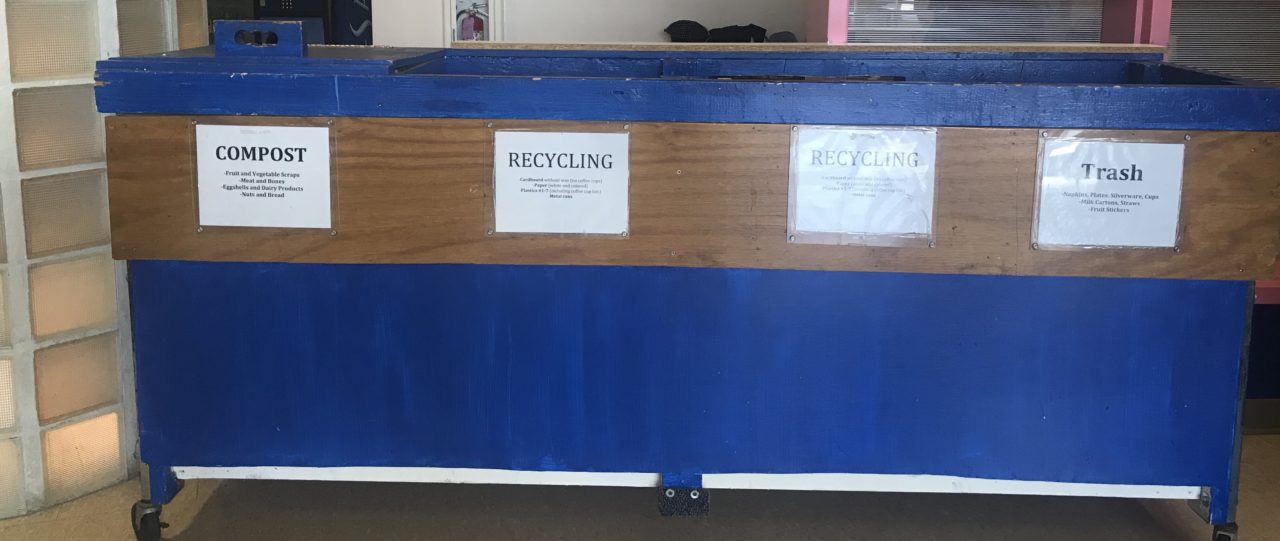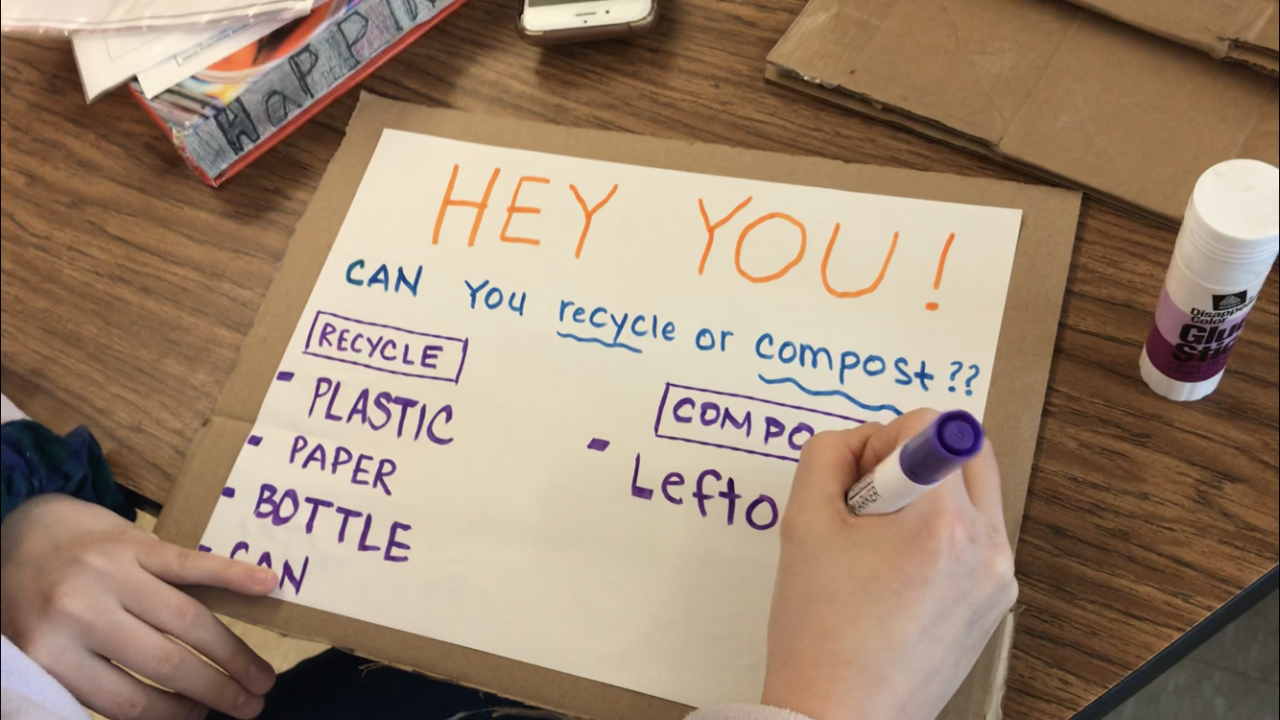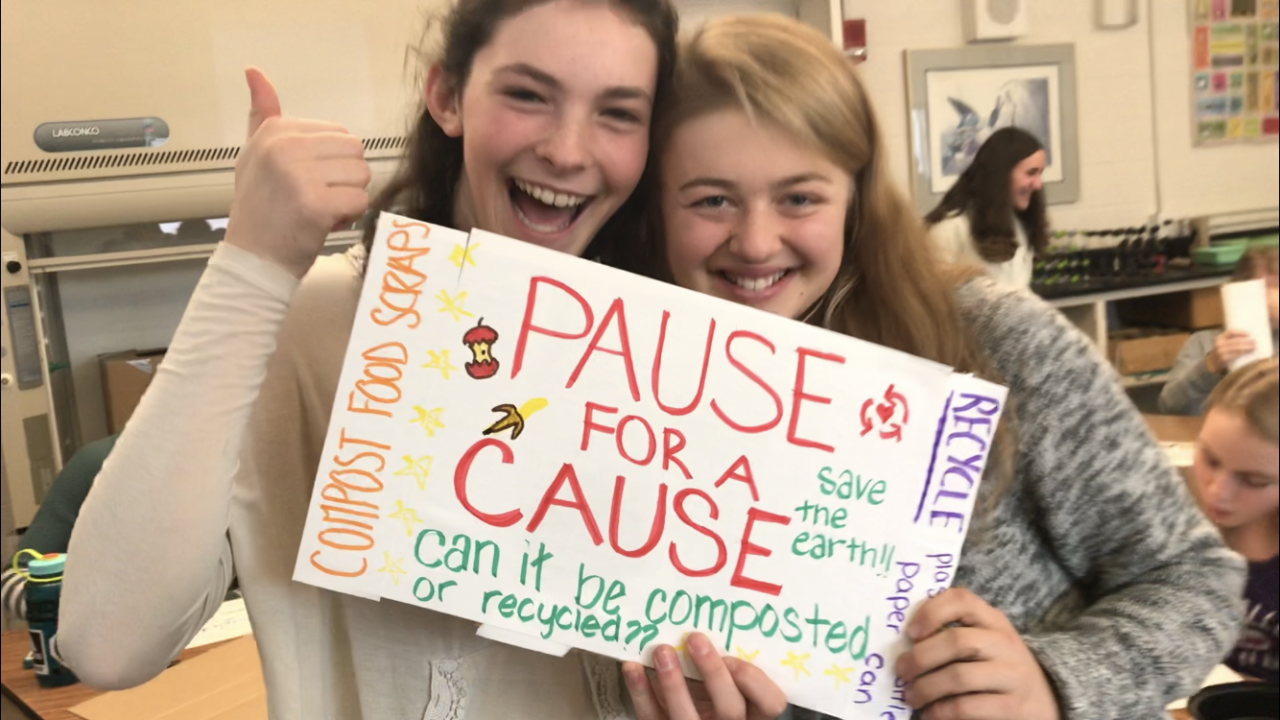Stop! Don’t Throw That Away!
It is essential to know how to properly dispose of your waste.

Background Information
Ever since she was young, Sydney has loved playing outside. Growing up in Norwich, Vermont, she has seen how the natural beauty of her hometown has impacted her life, and wants to make sure that it stays beautiful for generations to come. When she got older and realized that, due to global warming and other environmental issues, the world may lose the natural spaces that are so special to her, she became passionate about protecting the earth. Since freshman year of high school, Sydney has been an active member of her school’s Environmental Club and has worked on many projects to make her school more sustainable. Such projects have included creating an extinct species graveyard on the front lawn, helping to organize a school-wide Earth Day celebration, and working with other students to implement a new school-wide compost system. She hopes these projects encourage others to take care of the environment.
Sydney’s high school does not have a lunch period and so students eat lunch in classrooms and public spaces throughout the building. Recently, she has noticed that students at her school do not know how to properly dispose of their waste, even though many classrooms have trash, recycling, and compost bins. People throw all their waste (e.g. paper, food scraps, and plastic) into the trash. Many do not realize that when you throw waste into the trash, it sits in landfills for decades. Trash cannot decompose in landfills, and consequently, these areas produce many toxins that damage the environment. Properly disposing of one’s waste is an important skill to develop in order to be an informed world citizen. She wanted to use her CLP to create an easy and fun way to encourage others to recycle and compost, and show them why it is important.
This is a waste disposal center in Sydney’s school cafeteria. Unfortunately, many students do not use it because they eat during class rather than in the cafeteria.
“It is essential to know how to properly dispose of your waste so that trash does not end up in landfills and pollute the earth. It is never too early or too late to learn how.” – Sydney Stearns
Implementation of Project
As co-President, Sydney worked with the Environmental Club at her school to create cardboard lids to put over all the trash cans in her school. The cardboard lids included catchy slogans and fun designs that encouraged others to stop before they throw things in the trash and consider whether they could put their waste into the trash or recycling instead. She worked with and encouraged thirty volunteers from the Environmental Club to make these signs during their last club meeting before winter break. Volunteers brought in cardboard, and she borrowed paper, scissors, glue, and markers from her school’s art department. The project went very well, and after the meeting, volunteers put these signs on about forty trash cans throughout the school. Lastly, because she was able to gather all the materials for this project from community members, this project was totally free!
“This project was a fun way to connect students from different grades, relax, draw, and promote an important environmental message.” – Sydney Stearns
https://youtu.be/HcfkAnfkPdY
Results of Project
After members from the environmental club made the signs, they each put them on top of trash cans throughout their high school. Throughout the day, she saw students pause at the trash can and turn to either the compost or recycling where they disposed of their waste. Some students, unfortunately, ignored the signs but she hopes that creating more educational materials about waste disposal for the school will stop that behavior. On the other hand, most students read the signs and threw their plastic bottles into the recycling rather than the trash. The compost program that Sydney helped implement during the 2017-2018 academic year generated 2,000 pounds of compost! She is hopeful that these lids are the first step towards increasing that number.
“My hope is that students see these signs and think about where their trash goes before throwing something away.” – Sydney Stearns
What’s Next
Next, Sydney wants to continue educating others at her school about proper waste disposal. While these signs help people think about where to put their waste, she hopes to educate her peers about why these actions are important on both local and global levels. Right now, she is designing a more permanent sign to put over the trash cans that have more detailed information about the effect of landfills on the environment. Additionally, the environmental club is implementing a Teracycling program at her school, which will allow students to recycle a wider variety of materials, such as granola bar wrappers and chip bags. This project was a great way for environmental club members from different grades to get to know each other. Sydney is excited to continue working with this amazing group of students on more sustainability projects for the rest of her senior year!
“The goal of my CLP was to encourage others at my school to think about whether they can compost or recycle their waste before mindlessly throwing everything into the trash in order to make my school a more sustainable community.” – Sydney Stearns




